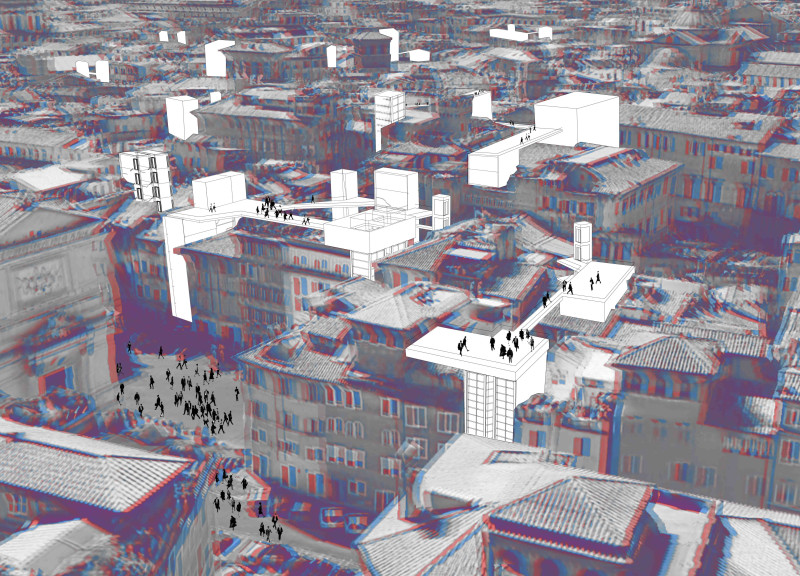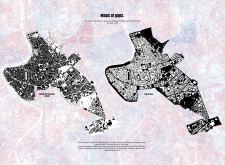5 key facts about this project
The design focuses on revitalizing underused urban spaces in the first nine Rioni of Rome. It emphasizes filling gaps in the existing urban fabric to enhance social interaction and improve the environment. Creating functional communal areas is central to the concept. This design aims to reimagine the urban landscape, prioritizing collaboration among residents and sustainability in everyday life.
Urban Gaps
Neglected areas are identified and categorized as "gaps," with sizes defined as modules. This classification helps target specific interventions to improve the urban environment. By addressing these gaps, opportunities for new pathways and interactions are created, enriching community life and promoting engagement among residents.
Vertical Connectivity
The integration of vertical forms is an essential part of the design. Elements such as staircases, elevators, and green towers improve accessibility throughout the urban landscape. These components allow for better movement between different levels, making the spaces more interconnected. This approach ensures that all parts of the design work together, enhancing the overall urban experience.
Elevated Green Space
A key feature of the design is an elevated park that serves both recreational and environmental management purposes. Placed above existing structures, this green space provides room for socialization and leisure. It also incorporates systems to manage water runoff, contributing to urban biodiversity and improving ecological conditions in the area.
Community Engagement
Community feedback is incorporated into the design process to ensure local needs are met effectively. This has led to the inclusion of playgrounds and recreational areas that focus on promoting social interaction among residents. The goal is to create a space where residents feel involved and responsible for maintaining their communal areas, strengthening their connection to the urban environment.
Water containers designed to capture rainwater for reuse stand out in the design. They represent a commitment to sustainability, ensuring that resources are carefully managed and conserved.






















































